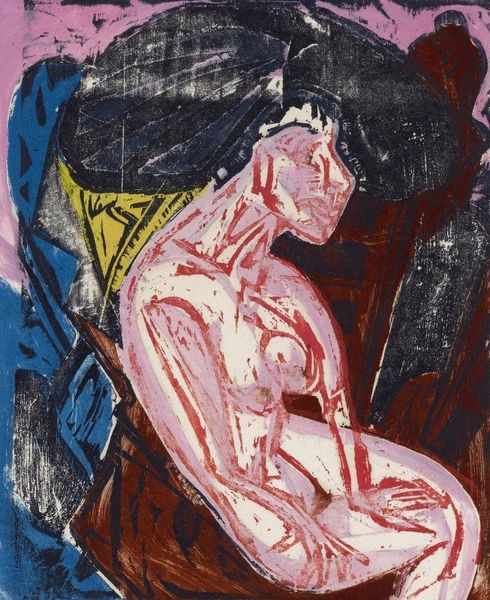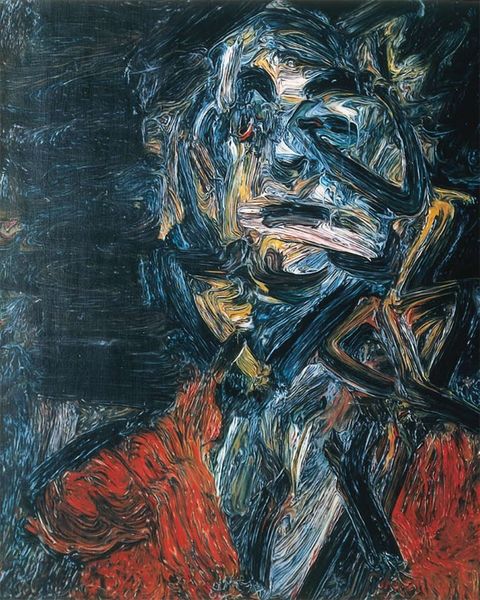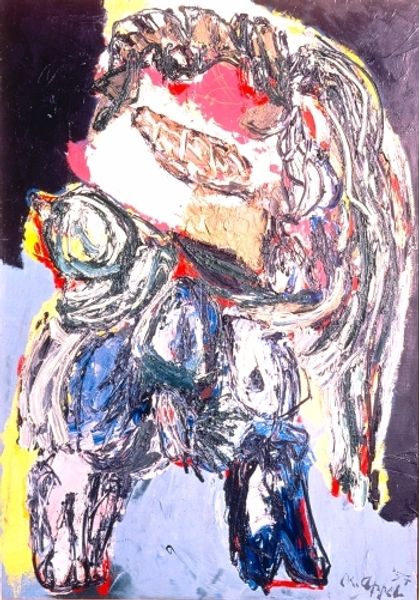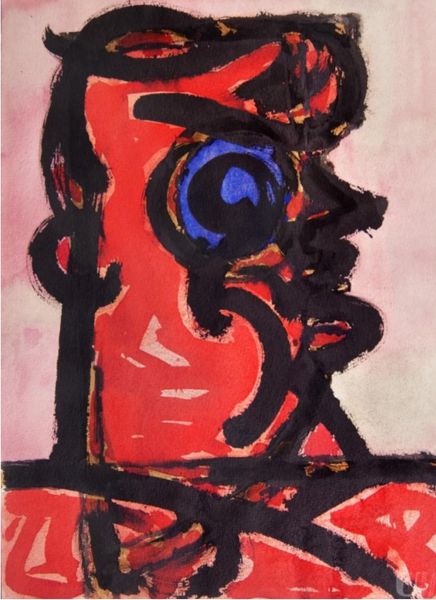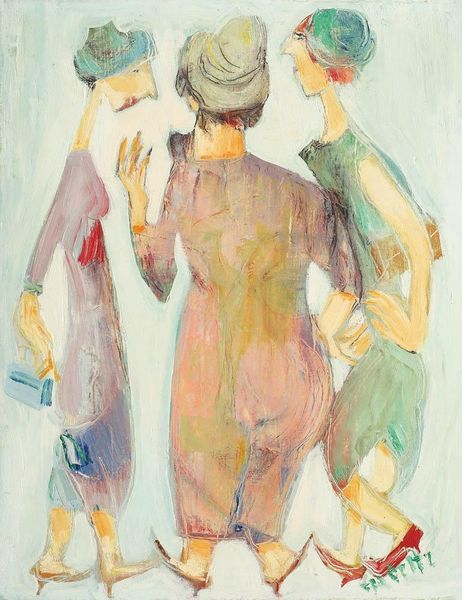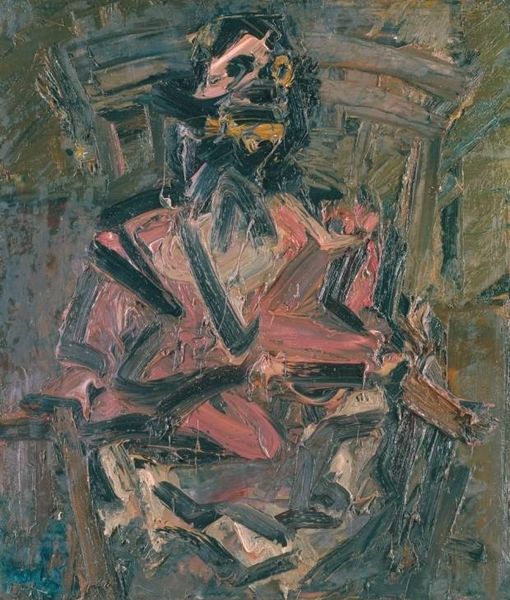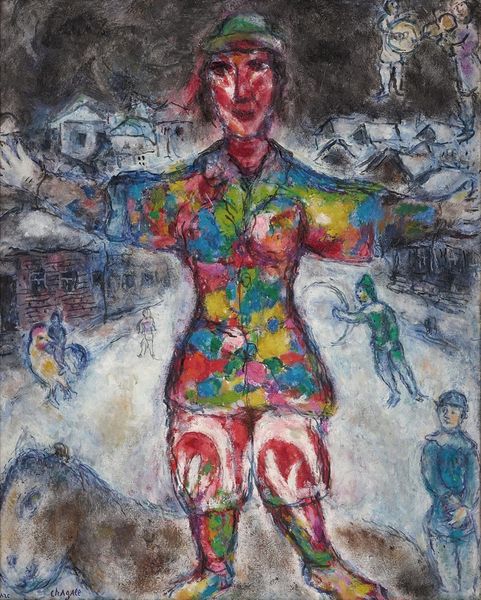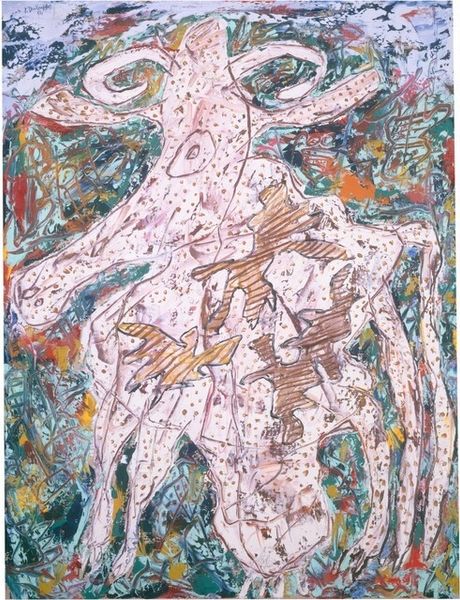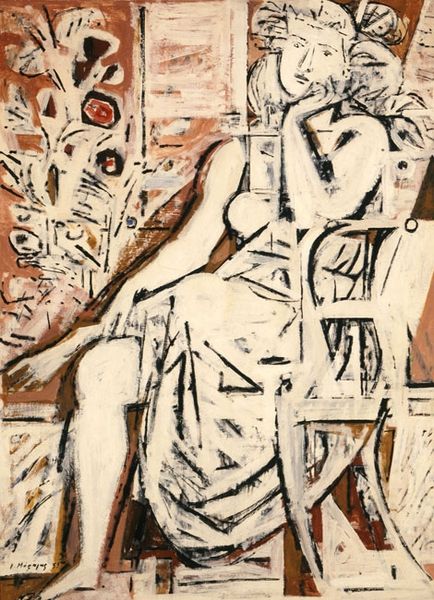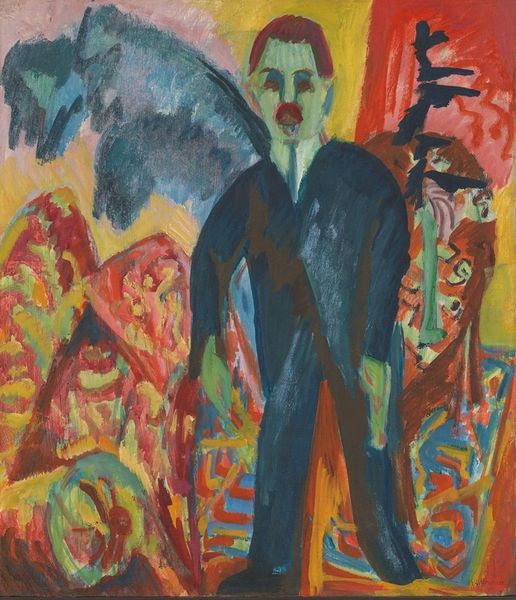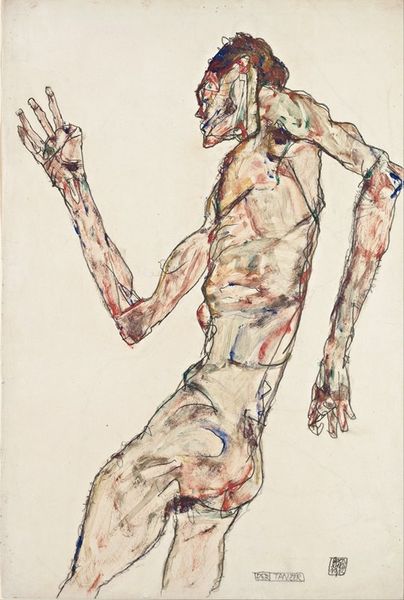
Copyright: Georg Baselitz,Fair Use
Curator: Editor: So here we have Georg Baselitz’s “Rebel,” created in 1965 using oil paint. It’s currently housed here at the Tate Modern. I am immediately struck by how raw the application of paint is. What are your thoughts when you look at this piece? Curator: I see a forceful statement on post-war identity construction. Notice how Baselitz applies the paint, thick and almost violently, as a means of challenging the traditional, refined methods often associated with portraiture. Think about the artist's choice to depict a fragmented figure, almost deconstructed, which certainly reflects the shattering of societal norms in Germany after World War II. Where does the ‘rebellion’ manifest itself for you? Editor: I suppose it's less about a literal rebellion and more about the rebellion of the medium itself? The materiality feels so… intentional. The lack of polish is making a statement, wouldn’t you say? Curator: Precisely. It's a conscious departure from the established art market's demands and expectations. Baselitz seems to question the very purpose of painting; he focuses instead on process, on the physicality of paint and canvas. The act of painting becomes a performance of dissent. This figure could then be interpreted as the ravaged figure of post-war Germany struggling to create something new, perhaps? Editor: That makes sense. I was stuck on the emotional impact, but considering the materials and the socio-political context, it shifts the whole meaning. So, it's not just expressionistic, it’s actively pushing against something specific, the dominant art scene. Curator: Exactly. By focusing on materiality and the labor-intensive process, he challenges the notion of art as solely an aesthetic experience. The “Rebel” then is about art as a form of critical and material engagement with its time. Editor: Well, I’ll certainly never look at an Expressionist painting the same way again. Curator: Good. The value is always embedded in context and manufacture!
Comments
No comments
Be the first to comment and join the conversation on the ultimate creative platform.
